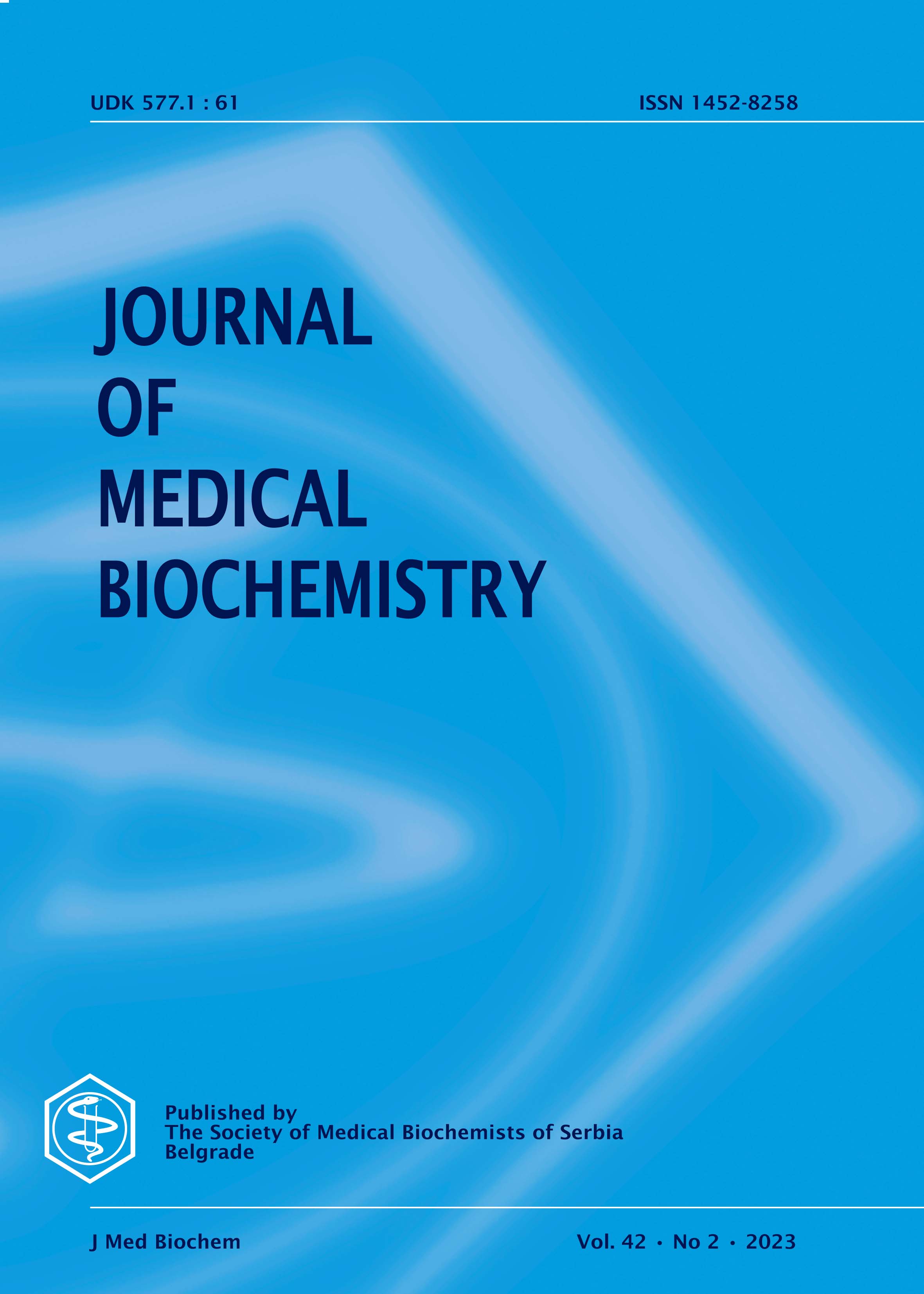False Negative Effect of High Triglyceride Concentration on Vitamin D Levels: A Big Data Study
False Negative Effect of Triglyceride on Vitamin D
Abstract
Background: Inaccurate test results may also be a reason why vitamin D deficiency is seen as a common problem in the world. Interferences from the sample matrix during testing are the most important factors of measurement error. In this study, the relevance between triglyceride and total cholesterol levels and vitamin D levels in Turkey was investigated.
Methods: 25-hydroxyvitamin D (25-OHD) test results studied in Turkey in 2021 and blood lipid levels were compared. Data were obtained from the Ministry of Health National Health Database (THND). Simultaneously, 25-OHD, triglyceride, and total cholesterol levels were studied and 1135644 test results were taken as basis.
Results: It is found that, if total cholesterol levels were above 400 mg/dL, 25-OHD levels were lower. 25-OHD levels above 100 ng/mL (considered as Vitamin D intoxication) were detected in total cholesterol levels below 400 mg/dL. There were 1538 patient samples in the groups in the 0-400 ng/dL range and no intoxication was observed in the 400-10.000 ng/dL range. The highest value (20.79±13.35 ng/mL) was found in the group with triglyceride levels between 0-99 mg/dL. It was observed that as the triglyceride level increased, 25-OHD levels decreased.
Conclusions: According to this study, there is a risk of toxicity when administering vitamin D therapy in patients with high cholesterol and triglyceride levels. This study is that it is the first study of this size in the literature. High triglyceride and cholesterol levels can cause inaccurate measurement of vitamin D levels, so care should be taken when evaluating these tests.
References
2. Hassan-Smith ZK, Hewison M, Gittoes NJ. Effect of vitamin D deficiency in developed countries. J Brit Med Bull 2017; 122(1): 79-89.
3. Pettifor JM, Thandrayen K, Thacher TD. Vitamin D deficiency and nutritional rickets in children. Vitamin D: Elsevier 2018: 179-201.
4. Palacios C, Gonzalez L. Is vitamin D deficiency a major global public health problem? J Steroid Biochem Mol Biol 2014; 144: 138-45.
5. Saibaba K, Bhaskar MV, Rao P, Ramana G, Dakshinamurty K. Interferences in clinical chemistry analysis. J Ind Clin Biochem 1998; 13(2): 55-62.
6. Gönel A, Koyuncu I. Measurement of the cellular hemoglobin concentration by laser scatter method from excessive lipemic sample: Case report. J Comb Chem. 2019; 22(7): 502-05.
7. Zeng SG, Zeng TT, Jiang H, Wang LL, Tang SQ, Sun YM, et al. A simple, fast correction method of triglyceride interference in blood hemoglobin automated measurement. J Clin Lab Anal 2013; 27(5): 341-45.
8. Agarwal S, Vargas G, Nordstrom C, Tam E, Buffone GJ, Devaraj S. Effect of interference from hemolysis, icterus and lipemia on routine pediatric clinical chemistry assays. Anal. Chim. Acta 2015; 438: 241-45.
9. Caglayan M, Sonmez C, Senes M, Gonel A, Gulbahar O, Bursa N. 25-Hydroxyvıtamın D (25-OHD) Levels in Turkısh Gerıatrıc Populatıon: A Natıonwıde Study. J Journal of Medical Biochemistry. 2022; 41: 1-9.
10. Sahin I, Haymana C, Demir T, Demirci I, Tasci I, Atmaca A, et al. Clinical characteristics and outcomes of COVID-19 patients with overweight and obesity: Turkish Nationwide Cohort Study (TurCObesity). Exp Clin Endocrinol Diabetes 2022; 130(02): 115-24.
11. Farrell C-JL, Martin S, McWhinney B, Straub I, Williams P, Herrmann M. State-of-the-art vitamin D assays: a comparison of automated immunoassays with liquid chromatography–tandem mass spectrometry methods. Clin Chem 2012; 58(3): 531-42.
12. Lensmeyer GL, Wiebe DA, Binkley N, Drezner MK. HPLC method for 25-hydroxyvitamin D measurement: comparison with contemporary assays. Clin Chem 2006;52(6): 1120-26.
13. Hart GR, Furniss JL, Laurie D, Durham SK. Measurement of vitamin D status: background, clinical use, and methodologies. J Clin Lab 2006; 52(7-8): 335-43.
14. Grebe SK, Singh RJ. LC-MS/MS in the Clinical Laboratory - Where to From Here? Clin Biochem Rev 2011; 32(1): 5-31.
15. Gonel A, Kirhan I, Koyuncu I, Bayraktar N, Karadag ME, Karadag M. The Role of Interferences in the Increasing Incidence of Vitamin D Deficiency. Endocr Metab Immune Disord Drug Targets 2020; 20(8): 1303-08.
16. Avci E, Demir S, Aslan D, Nar R, Şenol H. Assessment of Abbott Architect 25-OH vitamin D assay in different levels of vitamin D. J Med Biochem 2020; 39(1): 100-07.
17. Oldfield PR. Understanding the matrix effect in immunoassays. Bioanalysis. 2014; 6(11): 1425-27.
18. Nikolac N. Lipemia: causes, interference mechanisms, detection and management. Biochem Med 2014; 24(1): 57-67.
19. Gonel A, Yetisgin A. False Negative D Vitamin Measurement in LC-MS/MS Method Due to Hyperlipidemia: Case Report. Comb Chem 2019; 22(6): 428-30.
20. Dibaba DT. Effect of vitamin D supplementation on serum lipid profiles: a systematic review and meta-analysis. Nutr Rev 2019; 77(12): 890-902.
Copyright (c) 2022 Murat Caglayan

This work is licensed under a Creative Commons Attribution 4.0 International License.
The published articles will be distributed under the Creative Commons Attribution 4.0 International License (CC BY). It is allowed to copy and redistribute the material in any medium or format, and remix, transform, and build upon it for any purpose, even commercially, as long as appropriate credit is given to the original author(s), a link to the license is provided and it is indicated if changes were made. Users are required to provide full bibliographic description of the original publication (authors, article title, journal title, volume, issue, pages), as well as its DOI code. In electronic publishing, users are also required to link the content with both the original article published in Journal of Medical Biochemistry and the licence used.
Authors are able to enter into separate, additional contractual arrangements for the non-exclusive distribution of the journal's published version of the work (e.g., post it to an institutional repository or publish it in a book), with an acknowledgement of its initial publication in this journal.

